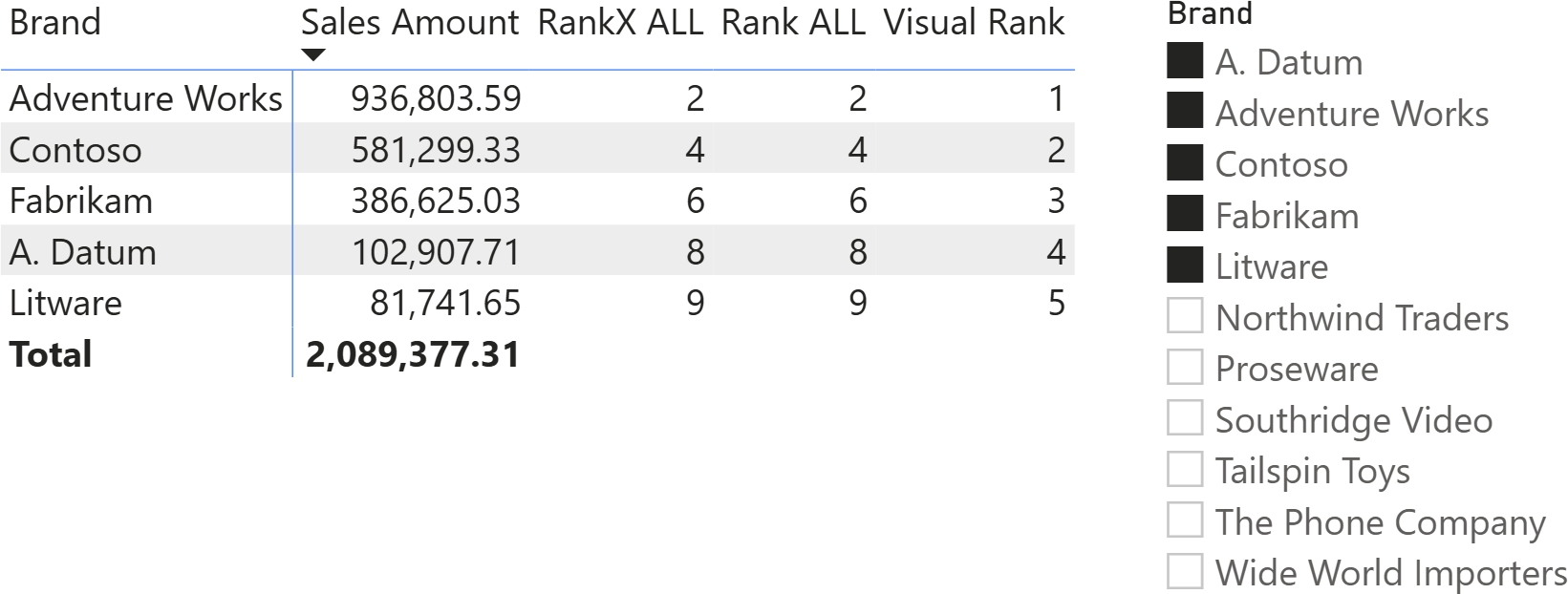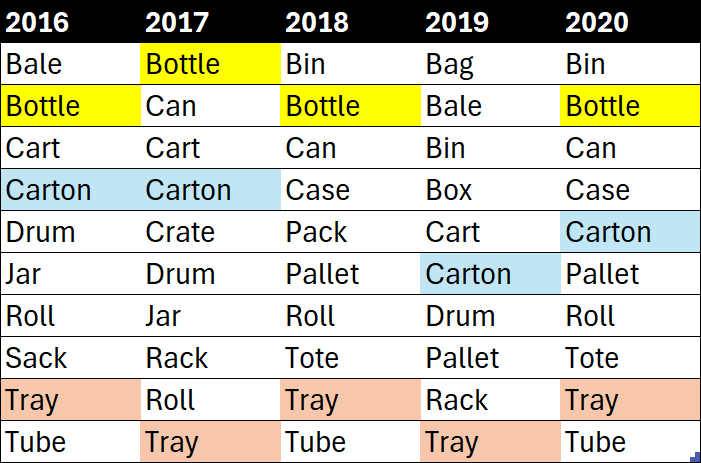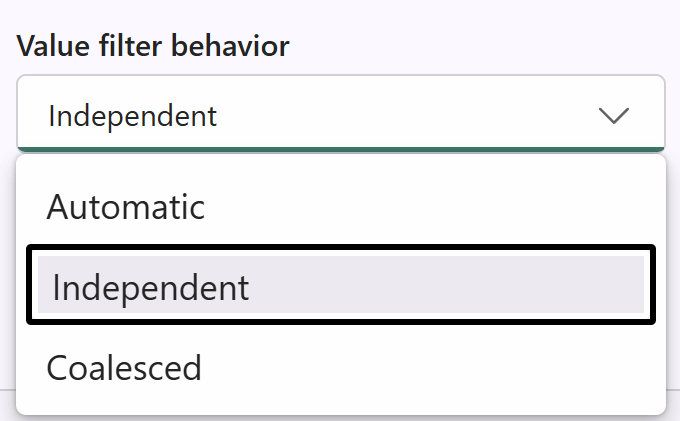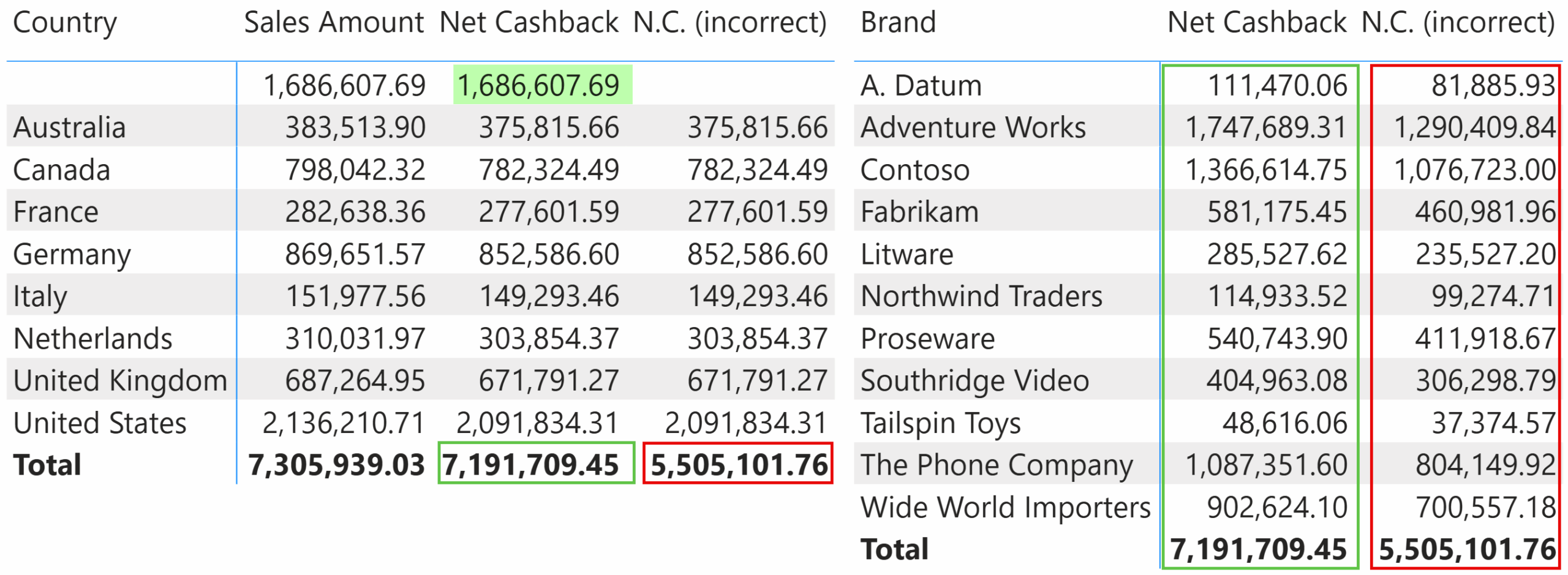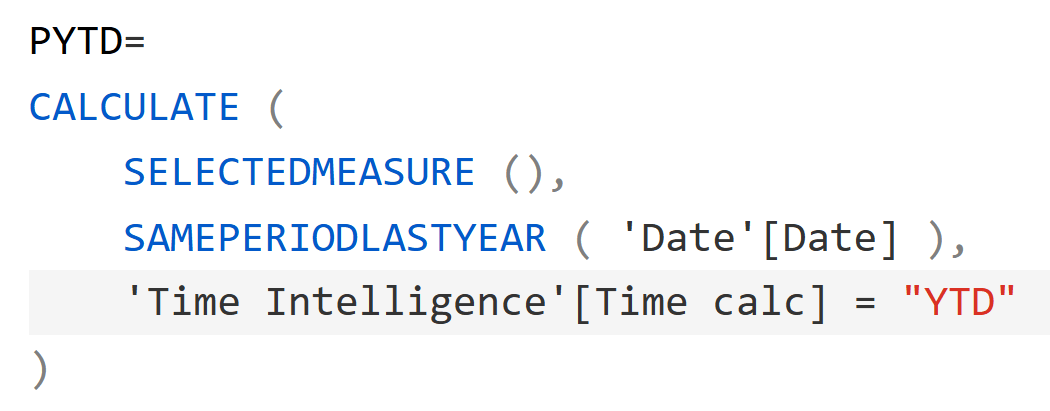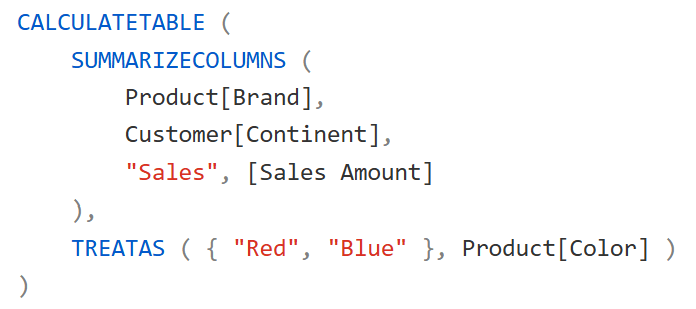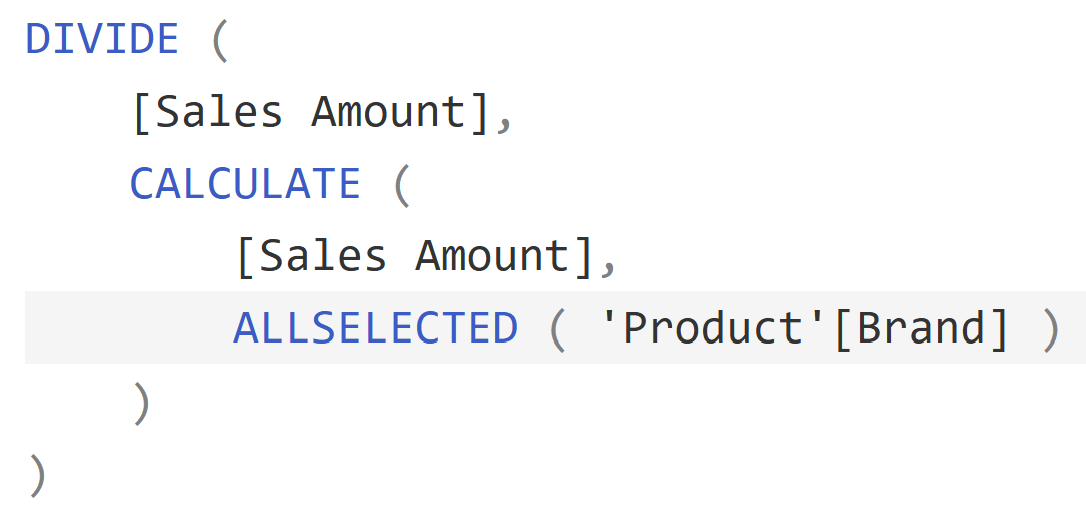-
Should you use RANK or stick with RANKX? In which scenarios is one better than the other? This article provides an in-depth analysis to help readers make informed choices. Read more
-
This article outlines the process of creating a measure to identify the top 10 products by sales each year. Read more
-
This article describes when to use VALUES in a table grouped by SUMMARIZE, then goes on to explain why you cannot however use VALUES with SUMMARIZECOLUMNS. Read more
-
Value filter behavior is a setting in Power BI semantic models that controls how filters are combined in SUMMARIZECOLUMNS. This article explains how it works and suggests its best configuration. Read more
-
User-defined functions are a new and exciting feature in DAX. In this article, we outline the key concepts to understand before using them in Power BI projects. Read more
-
Why and when you should use VALUES while iterating a table reference in DAX. Read more
-
This article describes the sideways recursion triggered by invoking a calculation item from another calculation item, explaining why it should be avoided to steer clear of unexpected results. Read more
-
SUMMARIZECOLUMNS is a powerful and complex function in DAX that in 2025 can be used in measures. This article outlines the best practices when using this function to avoid incorrect results. Read more
-
This advanced paper explains how SUMMARIZECOLUMNS works internally, providing insight into how to control its behavior in queries and measures following a list of best practices. Read more
-
ALLSELECTED is a powerful, yet dangerous function. This article describes the best practices to follow to avoid falling into the pitfalls involved with ALLSELECTED. Read more
